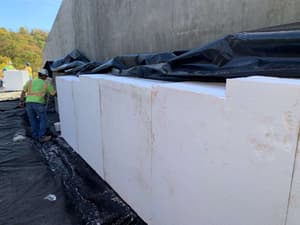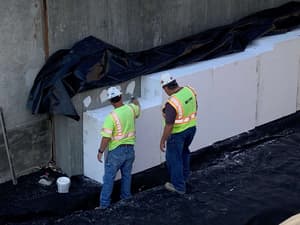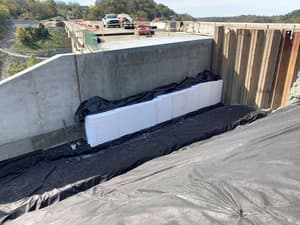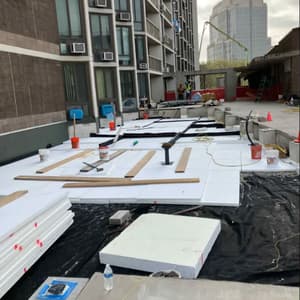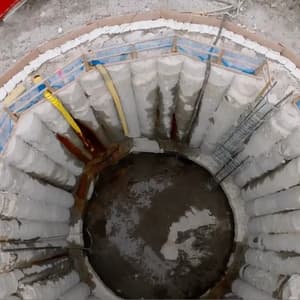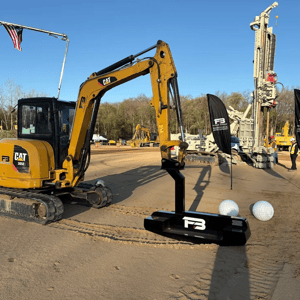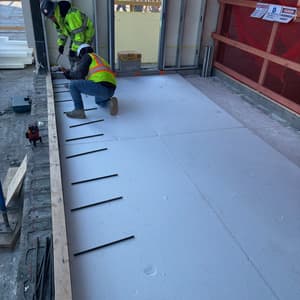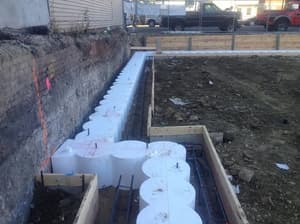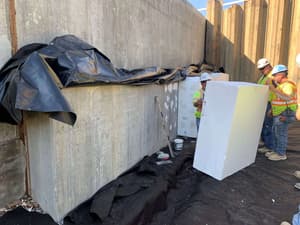
Elastic inclusion is produced from expanded polystyrene but has very different physical properties. Expanded polystyrene or EPS as it is commonly called is a lightweight void fill material with substantial compression strength. It is designed to not compress under stress. Elastic inclusion or elasticized polystyrene is EPS that has been prestressed giving it “memory”. The primary use of elastic inclusion is in bridge construction where it is used between the concrete bridge structure and the earth that buts up against the structure.
Everyone has felt the “dip” you run over when entering or exiting certain bridges. The dip is caused from the earth and pavement settling over years of freeze/thaw cycling. During the freeze cycle, the earth contracts and pulls away from the bridge abutment. When the weather gets warm it expands back. Because the concrete bridge abutment does not move, over time the earth and the pavement up against the concrete abutment settles creating the “dip”. Elasticized polystyrene stops that process by moving with the earth during the freeze thaw cycles. When the earth thaws and expands, the polystyrene compresses. When the earth freezes and contracts, the polystyrene expands, eliminating the gap that allows settlement.
Elasticized polystyrene has been used, and has proven its effectiveness, in bridge construction for over 20 years in the colder areas of the United States and in Canada.
